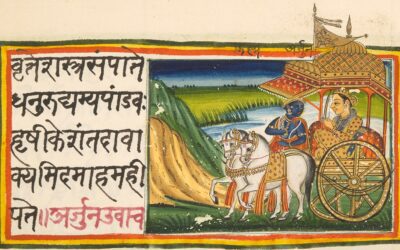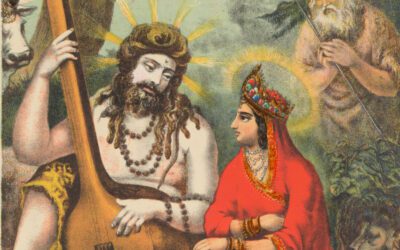Path of the Goddess
Have you ever wondered why there’s a trend among yogis to light candles and incense sticks, placing them around altars with peculiar objects? This practice, deeply rooted in the science of Tantra, goes beyond the obvious reasons like addressing the ‘wind release’ from deep relaxation. Why would someone prostrate before a statue, especially one with three eyes, four arms, and skulls around its neck? What is the essence of these practices in the context of the science of Tantra? What do all these symbols represent?
Bahir Yoga is the yoga of the exterior. It deals with the body through asana. Then there is the inner yoga, Antar Yoga, searching for the higher self within. The starting point of antar yoga is; that if divinity exists in every particle of existence, then it exists in humans as well. As sentient beings, we possess the potential to be absorbed into oneness, thereby achieving a state of unity. Consequently, this journey towards unity can profoundly transform our understanding of existence. Inner yoga aims to awaken the divine within.
As mere words and logic cannot capture such divinity, spiritual seekers relied on a universal language; symbolism. They used colours, shapes, and elements of nature to conceptualize and experience divinity. It all starts with the feminine and masculine principles: of Shiva and Shakti. Shiva, the masculine principle is one face of the medallion representing the consciousness, void, and spirit – the opposite of matter. Shakti, the feminine principle, represents the power of that consciousness. It is matter, soul, and energy in all forms and shapes. It is the other side of the medallion. Similarly, science reflects these principles as ‘+’ and ‘–‘ poles. The statue of a spectacular, adorned woman is a symbol representing this elevated concept.
Moreover, this symbolism extends beyond Hindu culture, the origin of yoga. Shakti has many names. In the Andean tradition, they refer to it as Pachamama – mother of earth and time. She is Durga the principal form of Mother Goddess in Hinduism. In tantra, she is Mahamaya, the ultimate shapeless form of the divine Mother Goddess. Many cultures revere Shakti as the great creator.
Shakti is creation in all forms. It is also the body of a human being in its flesh and bones; the mind generating thoughts and emotions as different forms of energy; the knowledge giving birth to concepts and values such as time, space, death, beauty, compassion, and abundance. In short, Shakti is the creative power in everything that we can conceive and beyond.
The science of tantra is working with these energies. Tantrics observing the flow of life developed a technology around this practice. One step towards this practice is using the symbolism of the deities to represent different aspects of manifestation. We can visualize a divine body using the symbols and myths that resonate with us. We can use these visualizations in our practices. When a sadhak (spiritual practitioner) bows down in front of a Shiva statue, they are showing reverence to supreme consciousness. Similarly, when they light a candle at Goddess Durga’s altar, they are paying respect to the divinity of motherhood. They are asking her to protect her children from harm and ignorance.
This practice uses a technology known as mantra+yantra=tantra. Mantra’s are sacred sounds that resonate with certain frequencies. Yantra are sacred geometrical shapes carrying the form, function and power of a frequency. Tantric practice primarily uses these tools. This deep connection with universal frequencies opens the way to paranormal results. This can influence the course of life for some practitioners. Additionally, a profound tantra practice can initiate the awakening of Kundalini Shakti, the fundamental force of our being that typically remains dormant.
While many popular practices incorporate these technologies, an authentic Tantra practice, deeply rooted in the science of Tantra, truly flourishes under the guidance of an initiated teacher. Indeed, the value of having a mentor to illuminate the path in the science of Tantra is significant. However, as the saying aptly warns, if you play with fire, you risk getting burned. Therefore, it’s crucial to approach these Tantra practices with caution and respect, always mindful of the profound principles of the science of Tantra.





0 Comments